The LIFE MareNatura project with a total budget of almost 11 million euros, is co-funded by the European Union (75%). It will cover an extensive marine area from the Aegean to the Ionian Sea and the Southern Adriatic, thus constituting the largest European marine biodiversity protection project ever implemented in Greece. A significant portion of the program’s actions will be implemented in 44 Natura 2000 protected areas (41 in Greece and 3 in Italy).
With key objectives to mitigate the threats facing nine important but vulnerable species of the Greek marine fauna and the protection of their marine habitats (the Mediterranean monk seal, the loggerhead turtle, the green turtle, the sperm whale, the harbor porpoise, the beaked whale, and the common dolphin, as well as seabirds as the Yelkouan shearwater and the Audouin’s gull), the environmental project LIFE MareNatura started in July 2023 in Greece and Italy and is expected to be completed until June 2029. The ultimate goal of the project is the effective protection of these species and, generally, the protection of marine biodiversity, by proposing a declaration of new marine protected areas, which will expand the Natura 2000 network in Greece. In this way, the project will significantly contribute to the implementation of the new European Union strategy for biodiversity, which states that at least 30% of the sea and land in Europe must be under protection by 2030, as well as the global strategy for biodiversity.
During the last decades, significant international initiatives have emerged to assist in the conservation efforts of the project’s target species. International lists of marine sites which are important for the conservation of biodiversity such as the Important Bird and Biodiversity Areas (IBAs), the BirdLife International list, and the Important Marine Mammal Areas (IMMAs) of the IUCN’s Marine Mammal Protected Areas Task Force were identified. International initiatives like ACCOBAMS, which conducted the first aerial survey of the entire Mediterranean in 2018 (ASI 2018), provided significant data for the conservation of target species and their offshore habitats. These initiatives improved our knowledge about the species and, at the same time, provided a much better informed database filling the gaps that had hindered a proper planning for the management of these areas. The Greek Marine IBAs list produced in 2012 by the LIFE07NAT/GR/00285 project team recognized an obvious gap in defining offshore IBAs, due to the lack of sufficient data and methodological tools for effective offshore work during the implementation of the aforementioned LIFE project.
The LIFE MareNatura project aims to fill this knowledge gap for target species by collecting data on their migratory routes, feeding grounds, congregation areas, as well as the threats they face. Simultaneously, it will identify marine hotspots to be proposed for inclusion in the Natura 2000 network of protected areas, thus expanding the existing network and implementing the European biodiversity strategy. Additionally, the project will develop suitable tools for monitoring significant marine areas and protected species, aiming at the systematization of monitoring methods across Europe and the development of a mechanism for observing the protection status of species. Moreover, the development of an early warning system for existing pressures, as well as a tool for decision-making and for identification of marine zone constituters one of the aims of the project as well.
Partners
A total of 5 universities and institutes, 4 environmental non-governmental organizations, 1 public agency and 2 private consultancy companies participate in the implementation of this ambitious project. Advisory support to the project will be actively provided by The Green Tank, an independent, non-profit think tank shaping policy solutions for a sustainable future.
More specifically, the corporate scheme includes:
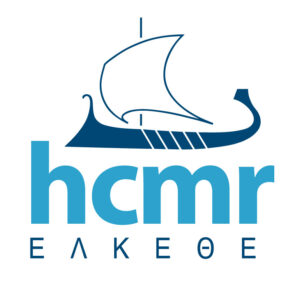
Hellenic Centre for Marine Research (HCMR) – Coordinating Beneficiary
The Hellenic Centre for Marine Research (HCMR) is the largest marine research centre of Greece and it comprises of 3 Institutes: the Institute of Marine Biology, Biotechnology and Aquaculture (IMBBC), the Institute of Marine Biological Resources and Inland Waters (IMBRIW) and the Institute of Oceanography (IO). Its horizontal missions are to conserve the health of the hydrosphere so that aquatic ecosystems continue providing their services to future generations, to promote sustainable exploitation of marine biological and other resources, to support the regional development, to promote sustainable aquaculture, to sensitize the public at large issues related to the hydrosphere and its conservation and to provide advice to national, Mediterranean and EU institutional bodies on environmental sustainability and management. HCMR conducts multidisciplinary applied and basic research concerning, among others, the structure and functioning of inland, coastal and marine ecosystems, the aquatic biodiversity (at all levels), the role of climatic change in the evolution of aquatic ecosystems, the effects of natural and human-induced pressures and hazards on the marine life, fisheries dynamics and ecology and the population genetics and genomics of marine organisms. HCMR has a long expertise in studying marine ecosystems and has coordinated several international projects, including LIFE, European as well as national projects.
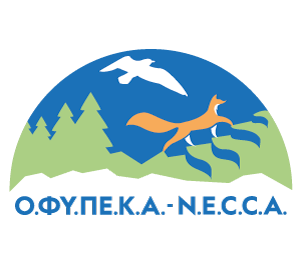
Natural Environment and Climate Change Agency of Greece (NECCA)
The Natural Environment and Climate Change Agency of Greece (NECCA) is a Legal Entity of Private Law supervised by the Ministry of Environment and Energy of the countrly. Its purpose is to implement the policy set by the Ministry, with a focus on sustainable practices, for the management of protected areas in Greece, the conservation of biodiversity, the promotion and implementation of sustainable development actions and the fight against climate change.
For the management, protection and promotion of the Greek protected areas, its 24 decentralized Protected Area Management Units operate throughout the country, covering the 446 sites of the Natura 2000 network, i.e. 27.6% of the land area and 19.6% of the territorial waters.
Here are some of the specific tasks that NECCA undertakes:
- Develops and implements management plans for protected areas.
- Conducts scientific research and monitoring of species and habitats.
- Supervises and protects protected areas from illegal activities.
- Provides opinions on projects and activities that may affect protected areas.
- Raises awareness of the public and the sites’ stakeholders about the importance of the protected areas.
- Promotes ecotourism in protected areas.

University of the Aegean
The University of the Aegean was founded in 1984 aiming to introduce new approaches in higher education in Greece and to promote regional development. It has created a strong international academic and research profile, as an active member of the European Universities Association (EUA), member of the EMUNI Senate, and partner in many academic and research networks. Research in the Department of Marine Sciences in UAegean covers a broad range of subjects, from marine biology and conservation to marine geology, physical and chemical oceanography, remote sensing, hydroacoustic technology and climate change. The “Marine Biodiversity and Ecosystems Management” lab has long experience in benthic ecology, biodiversity and conservation, ecosystem functioning and health, and has led or participated in many projects related to marine conservation and systematic conservation planning (e.g. MARISCA, PROTOMEDEA, MARCONS).
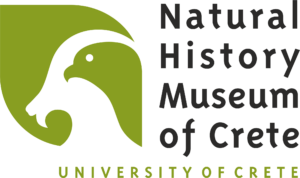
University of Crete – Natural History Museum of Crete (UoC-NHCM)
Natural History Museum of Crete (NHMC) was established as a department of the Faculty of Science of the University of Crete since 1980, being a pioneer institute at national and European level in several aspects of biological and geological diversity. The first aspect regards research on the environment of the Eastern Mediterranean at all levels, i.e. from basic to applied research, from the cellular to the level of the ecosystems, and from state of the art applications and techniques to management of protected areas and continuous interventions on environmental issues of local and national interest.
The NHMC focuses in studying aspects of the Eastern Mediterranean diversity in the fields of Geology, Palaeontology, Ecology, Evolution, Biogeography, Phylogeography, Phylogenetics, Systematics and Taxonomy. At present, four departments are fully operational: The Zoological, the Botanical, the Mineralogical and the Geological combined with the Paleontological department. It is the only Natural History Museum in Greece, dealing with all aspects of natural environment and occupies a significant number of specialists in biological and geological diversity. In NHMC permanent Exhibition Halls, of 3500 m2, in the city of Heraklion, Crete, the natural environment of the eastern Mediterranean area with special emphasis on Greece and Crete, is displayed. Additionally, having participated and participating in several national, European and international conservation and management projects concerning protected areas and priority species, NHMC has a vast in the field of conservation and management in Crete, with great results.
In 2012, NHMC was awarded by the Emmanuel Benakis prize of the Academy of Sciences in Athens for its complex educational, research, writing and publishing deed, its exemplary organization and structure that designate it as one of the most significant, for its specialty, museum globally, in which scientific research is being advanced and make it equivalent to similar foreign institutions and education sites. Also, NHMC was awarded the Certificate of Excellence of 2013 by Trip Advisor as the NHMC became by the visitors as one of the excellent tourist destinations worldwide.
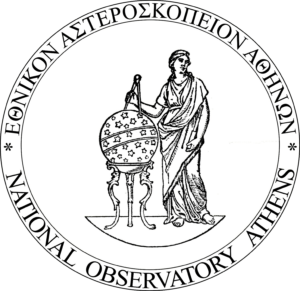
National Observatory of Athens (NOA)
The National Observatory of Athens (NOA) is the first Research Center in modern Greece, established in 1842, contributing since then its research to science and society. Today, the activities of NOA are organized around 3 Institutes: The Institute for Environmental Research and Sustainable Development (IERSD), the Institute for Astronomy, Astrophysics, Space Applications and Remote Sensing (IAASARS), and the Geodynamics Institute (GI). NOA with its highly-skilled human resources and important infrastructure plays today an important role in research in the aforementioned fields at both European and international levels.
Currently, IERSD with its research and consultancy activities has become the national “focal point” for environmental and climate change issues, contributing to the economy, environment and society. The IERSD brings dedicated research skills in the observation of the environment organised under four thematic pillars: i. Atmospheric Environment, ii. Meteorology and Hydrology, iii. Climate and Climate Change, iv. Energy. The Climate and Climate Change pillar focuses on [1] studies of the past, present and future climate trends and extremes, [2] the assessment of the environmental, financial and social impacts of climate change and, [3] adaptation and mitigation measures. Activities include climate change modelling (both mean and extreme events), impacts of climate change on specific sectors (e.g., agriculture, energy demand, forest fires, tourism, health), vulnerability and adaptation assessments of various activities related to climate change, and climate services provision.
The CLIMADAPT group at the IERSD (IERSD/climate & climate change group) has extensive experience in providing climate change (impact) projections to EU and (inter-)nationally funded projects like the LIFE MareNatura project. The IERSD/CLIMADAPT group will provide high-resolution climate projections and climate indicators to the MareNature project, focusing on atmospheric and oceanic variables that directly affect breeding, feeding and migration corridors of target marine megafauna. Specific downscaled projections will be offered for selected biodiversity hotspots (WP3). The IERSD/CLIMADAPT group has long-term experience in successfully coordinating and managing international projects, ensuring the appropriate execution of tasks relating to the relevant project’s data management (WP1, WP4-6).
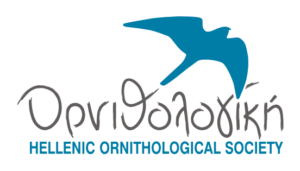
Hellenic Ornithological Society / BirdLife Greece
The Hellenic Ornithological Society/BirdLife Greece (HOS) is an environmental not-for-profit, non-governmental organization that aims to protect wild birds and their habitat in Greece. Since 1982, the HOS strives to ensure that humans and birds can share a common future.
The work of HOS includes conservation and research actions, public awareness and education activities, volunteer and birding tourism actions, as well as direct action on urgent issues of environmental law breach.
The HOS is a partner of BirdLife International since 1994, thus actively contributing to the largest conservation network of the world, together with 120 partners globally.
Τhe HOS has received an award of excellence from the Academy of Athens, as well as several awards by the European Commission.

MOm / The Hellenic Society for the Study and Protection of the Monk seal
MOm / The Hellenic Society for the Study and Protection of the Monk seal is a Greek non–governmental environmental organization with the legal status of a Non–profit association. MOm is active in the protection and promotion of the coastal and marine environment of Greece, through the protection of the Mediterranean monk seal, which is the only seal species in the Mediterranean Sea and the most endangered seal on earth.
MOm’s scientific research, conservation and education activities are carried out by a dedicated and highly-specialized team of professionals (i.e. biologists, field technicians, media officers) with the help of numerous volunteers. MOm’s activities include:
- Scientific Research
- Rescue and Rehabilitation
- Protection and Management
- Public Awareness and Sensitization
- Environmental Education
According to the regulations of the International Convention on the Trade of Endangered Species (CITES) MOm is an accredited research institute (Prot. No.: 89670/1427/12‐3‐2007 / Code Nr.: GR 003). All research and rehabilitation and reintroduction efforts of the Organization are carried out with the necessary permits from the national and international competent authorities.
Since 1996, MOm has been a member of IUCN (International Union for the Conservation of Nature), the largest organization in the world for the protection of the natural environment and has participated with a representative in the Seal Specialist Group.
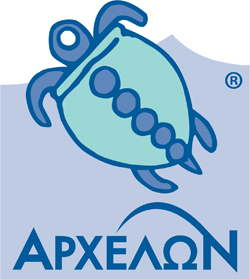
ARCHELON, The Sea Turtle Protection Society of Greece
ARCHELON was founded in 1983 and is a non-profit association with the aim of studying and protecting sea turtles and their habitats in Greece. ARCHELON’s vision is that the threats which sea turtles face will be eliminated and that these species will continue to fulfill their ecological role in nature unhindered. For this purpose, ARCHELON plans and implements projects and actions for the conservation of sea turtles and their habitats, combining scientific work with volunteering. Also, ARCHELON is seeking to activate society through awareness raising and educational activities for a better and sustainable planet.
ARCHELON records systematically the nesting of the loggerhead sea turtles and protects their nests in the most important nesting beaches of in Zakynthos, Peloponnese and Crete from May to September every year. At the same time, ARCHELON volunteers carry out public awareness activities for Greek and foreign visitors. ARCHELON’s sea turtle nest recording projects in Zakynthos and Kyparissia Bay are among the longest-running worldwide.
Since 1994 ARCHELON operates the Sea Turtle Rescue Centre in Glyfada, Attica, where injured or sick sea turtles from all over Greece receive treatment and consequently, when ready, return to the sea. The educational activities at the Rescue Centre are regularly attended by schools as well as visitors. Sea turtles and their protection are showcased as a symbol for the protection of marine biodiversity.
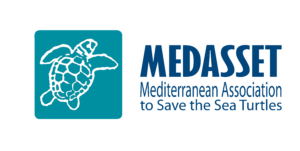
Mediterranean Association to Save the Sea Turtles – MEDASSET
With roots that go back to 1983, MEDASSET – Mediterranean Association to Save the Sea Turtles was founded in 1988 in England and in 1993 in Greece, having as its core mission to protect sea turtles and their natural habitats throughout the Mediterranean. MEDASSET’s main pillars of action include sea turtle conservation, coastal & marine habitats protection (incl. P. oceanica), Marine Protected Areas, fisheries interactions, sustainable tourism, marine litter & pollution, sustainable coastal & offshore development, climate change and maritime traffic impact mitigation, incl. anchoring.
MEDASSET is an international NGO registered as a not-for-profit organisation in Greece. MEDASSET has been a partner to the UNEP/MAP (United Nations Mediterranean Action Plan), its Action Plan for the Conservation of Marine Turtles in the Mediterranean and a Permanent Observer-member at the Bern Convention for the Conservation of European Wildlife and Natural Habitats, since 1988.
In the framework of the LIFE MareNatura program, MEDASSET will be leading the policy activities by building on its already well-established network in the Mediterranean and international fora. Results stemming from the research activities will lead to high-level advocacy activities and recommendations, amplifying the project’s impacts in the wider Mediterranean area (scaling up). MEDASSET’s experience and actions, as the leading partner, in designing and implementing awareness raising and communication activities will assist to achieve the program’s overall communication goals.
Nature Conservation Consultants (NCC)
Nature Conservation Consultants (NCC) is a consulting company established in 2010. The vision of NCC is to promote biodiversity conservation by providing top level expert advice in the planning and implementation of nature conservation projects and by facilitating integrated conservation approaches and partnerships, with public and private stakeholders, involving also the research community.
The consultancy has extensive experience in state-of-the-art and internationally recognized biodiversity monitoring methods. It specializes in monitoring of biodiversity with the use of innovative technologies, such as radar, drones, bioacoustics and thermal methods. It also has important experience in monitoring of marine species, from land, sea and air, as well as in telemetry. It collaborates with the most experienced scientists from Greece and abroad, as well as with environmental consultancies from abroad.

Institute for Environmental Protection and Research – ISPRA
The Italian Institute for Environmental Protection and Research – Istituto Superiore per la Protezione e la Ricerca Ambientale (ISPRA) is the technical-scientific body of the Ministry of Environment and Energy Security (MASE) and acts under its supervision.
The Institute promotes and implements strategic approaches to address issues concerning biodiversity and habitat conservation. ISPRA is also the guiding and coordinating body for regional environmental protection agencies (ARPAs) and cooperates with the European Environment Agency and national and international institutions and organizations working on environmental protection.
MASE relies on ISPRA for the implementation of the EU Directive “Marine Strategy”, and ISPRA is responsible for the organization and coordination of the monitoring of the status of seabirds and marine mammals living in the Italian national waters. It is involved in Italian marine SPA identification and has been an associated beneficiary of several LIFE Nature projects concerning seabird conservation.

WaterProof Marine Consultancy & Services BV
WaterProof Marine Consultancy & Services BV. is a specialist consultancy firm for the marine sector. The company was founded in 2015 by 2 specialist advisors and has experienced significant growth during the almost 9 years that we have existed. Our company now consists of 22 employees with a very diverse background, including university-educated physical geographical, civil engineering, physics and mathematics specialists, practically trained field workers and technical professionals. By bringing together individual specialist knowledge and skills, a unique team of people has been created who complement and strengthen each other very well.
We focus on specialist advice in the field of water movement, morphology, underwater sound and electromagnetic fields. We work for ports, dredgers, wind farm developers, grid operators and governments, among others. With the growing offshore wind developments, we see that in addition to studies in the coastal zone, we are also increasingly working on more offshore-oriented sustainable developments.
Actions
The LIFE MareNatura project includes 6 Work Packages (WP) that focus on:
- The coordination and management of the program (WP1), which includes the:
- Creation of project teams (management, administration, finance, fieldwork, data analysis, communication, and policy),
- Methods and tools for monitoring and evaluating the actions and the deliverables used by all partners,
- Communication among partners
- Other administrative issues.
- The collection of scientific data to fill the knowledge gaps and to identify biodiversity hotspots in the study area (WP2), which includes conducting ecological studies with aerial (118,000 km of aerial routes) and marine means (10,000 nautical miles). The ultimate goal is to cover a total of 48 million hectares of marine space (20% of the Mediterranean basin).
These studies include:
- the identification and recording of the species and their habitats in the field (direct observation, drones, thermal cameras, radar, e-DNA, etc.),
- the installation of more than 200 satellite transmitters on a corresponding number of individuals of all species and monitoring their movements across their entire distribution area,
- the collection of biological, histological, and genetic material and conducting related analyses of the material to monitor the distribution, genetic diversity, and dietary habits of the target species populations,
- identification of feeding areas and their interactions with fishing,
- data collection related to direct and/or indirect mortality of the species and the assessment of threats and pressures from human activities, etc.
The ultimate goal of these studies is that the processing and evaluation of these data will lead to the identification and mapping of biodiversity hotspots in the study area (within the territorial waters of Greece and Italy, in international waters, and in the EEZ of Greece-Italy), to the determination of new proposed areas for their inclusion in the Natura 2000 ecological network (only for Greece), and to the setting of conservation goals for these species within the new proposed marine protected areas.
- In the production of data and tools that will enhance biodiversity conservation policies and facilitate maritime spatial planning in Greece and Italy (WP3). The scientific data collected from the previous action package, the socio-economic data related to human activities as well as the impacts and future projections of climate change in the broader project study area -which will be produced in this specific work package- will be analyzed, evaluated, and represented in a series of geospatial mappings of risks (risk maps) for the target species. Both maps and all other information extracted from the ecological studies will be used in the creation of an online tool which will support services and bodies that plan or/and implement policies and decisions related to marine planning. At the same time, a group of representatives from public authorities and other stakeholder groups will be formed, who will be trained in the use of this tool as well as in the methods of monitoring marine biodiversity, evaluating the risks of planned projects and infrastructure in the marine environment with the ultimate goal of cooperation, knowledge and experience exchange, and proper decision-making for the benefit of the aquatic environment and marine biodiversity in Greece and Italy.
- In sustainability, reproduction, and further utilization of the project results (WP4). The actions in this package initially involve the design of actions to promote the project’s results to agencies and services in other Mediterranean countries that could utilize and reproduce in their own areas the new scientific data that will emerge from the project, as well as the tools and methods that will be used and developed by the project. This design includes the creation of a European network for marine biodiversity that will include scientists, academics, and NGOs related to the subject, the development of collaborations with international organizations, institutes, foundations, agencies, and other stakeholders in the field, and the conduction of 8 Marine Environmental Schools for staff and employees of Protected Area Management Units, including not only theoretical lessons but also practical application in field research and in the implementation of protection and conservation actions in 3 pilot areas, within the framework of the project.
Simultaneously, a rapid action team will be created from the staff of NECCA (Natural Environment and Climate Change Agency) who will be trained and will form the core team of the authority for the continuation of monitoring the marine environment in Greece. Also, an Early Warning System will be formed that will detect, evaluate, and intervene in real-time in cases where there are signs of population decline, movements, nutritional sufficiency, mortality, disturbance, or other risks to the target species.
- In raising awareness and sensitizing the public and stakeholders (WP5). Through a series of communication and promotion activities about the project, its objectives, and actions, the project will attempt to sensitize the public, agencies, services, and political personnel not only in Greece and Italy but also more broadly in the countries of the Mediterranean basin about the importance of the marine environment and the species that inhabit it. This work package includes the production and distribution of informational print and electronic materials, organizing and participating in events locally, nationally, and internationally, networking with other funded projects as well as with international bodies and organizations, and disseminating the program’s results to the international scientific community and to the broader public.
- In monitoring and evaluating the implementation of the project and its impacts on the broader socio-economic environment of the study area (WP6). Beyond the formal internal monitoring of the progress of actions and the indicators already set as targets by LIFE MareNatura, there is provision for the monitoring and evaluation of the impacts of targeted conservation actions that will be implemented in 3 selected Natura 2000 areas (Package 3) on the species which they aim to conserve.
Objectives-Results
The purpose of the project is to decisively contribute to increasing the portion of the European Union’s marine area that is under effective protection by 2030 and to include the biodiversity hotspots identified by the project, in an international scientific catalog of significant marine biodiversity conservation areas, ultimately aiming for their institutional protection through inclusion in international treaties, agreements, and conventions.
The specific objectives of the project are:
- To conduct extensive ecological studies in the program area (48 million hectares of marine space, >20% of the Mediterranean basin) in order to obtain significant scientific data that will be used in identifying biodiversity centers and conserving the 9 target species.
- To use this data for the identification of the Catalog of Mediterranean Offshore Biodiversity Centers (MOBI) which will include >30 areas in the Eastern Mediterranean, increasing their coverage by 10-15% in territorial waters, including an additional 20-30% of the Greek EEZ and 10-20% of the waters in the Areas Beyond National Jurisdiction.
- To provide the Greek State with indisputable evidence and planning mechanisms for expanding the Network of Marine Protected Areas in Greek territorial waters and the Greek EEZ (desired number of areas to be included in the Natura 2000 Network of more than 10 new MPAs and 10 new SACs), so as to achieve the 30% goal of the EU Biodiversity Strategy.
- To promote the inclusion of the remaining MOBI centers, located in Areas beyond National Jurisdiction, into international treaties and agreements.
- To provide sufficient data for the target species and their habitats to IUCN and Birdlife International.
- To improve the management of marine protected areas by defining/updating the conservation objectives of each Greek pilot area (41 areas in total), as well as proposing Site-Specific Objectives (SSOs) & Management Guidelines for the new candidate Natura 2000 marine areas (at least 20 areas) and for all MOBI areas (at least 30 areas).
- To improve the decision-making process related to nature conservation strategies, spatial planning, and threat mitigation in Greece, Italy, and other Mediterranean countries through the development of a flexible Decision Support Tool for marrine spatial planning.
- To compile and pilot an Integrated Monitoring Project of the project’s pilot areas and the MOBI areas for systematic evaluation of the conservation status of the target species and their habitats, with the development of a real-time monitoring plan using modern techniques and biodiversity indicators capable of quickly identifying potential threats and short-term changes in the marine environment, taking into account climate change assessments.
- To propose the expansion of the Monitoring Program to other countries of the European Mediterranean countries, through networking actions and exchange of expertise.
- To identify the spatial extent of the main threats of the target species and their ecosystems and produce 9 Risk Maps specific to each species.
- To establish a Marine Conservation Working Group in Greece, consisting of well-trained staff of the Protected Area Management Units and employees of ΝΕCCA (Natural Environment and Climate Change Agency), who will further coordinate the research, the implementation of conservation actions, the monitoring, and management of the Greek marine areas of the Natura 2000 Network and the MOBI areas of Greece and Italy.
- To ensure the possibility of transfer and continuity of the project results through the training of at least 100 managers of Protected Areas and policy makers in Greece and Italy.
- To conduct an extensive networking and stakeholder involvement campaign to ensure the dissemination of results, the conservation and management proposals of the marine environment at various levels of national and international decision-making processes.
- To promote the project results and actions to the broader society throughout specific public awareness activities.
Networking
Coming soon
Deliverables
Work Package 2
Survey’s Inventory
Work Package 3
Conservation Plans
Climate change impact assesment on Marine Biodiversity
Work Package 4
Replicability and Transferability Plan
Integrated Monitoring Plan
Marine Conservation School Good Practice Guides (Training material)
After-LIFE Conservation Plan
Work Package 5
Personal stories
School kit
Layman’s Report
Work Package 6
Initial Extract of the project data from the LIFE KPI Webtool / Final Integrated Monitoring Plan

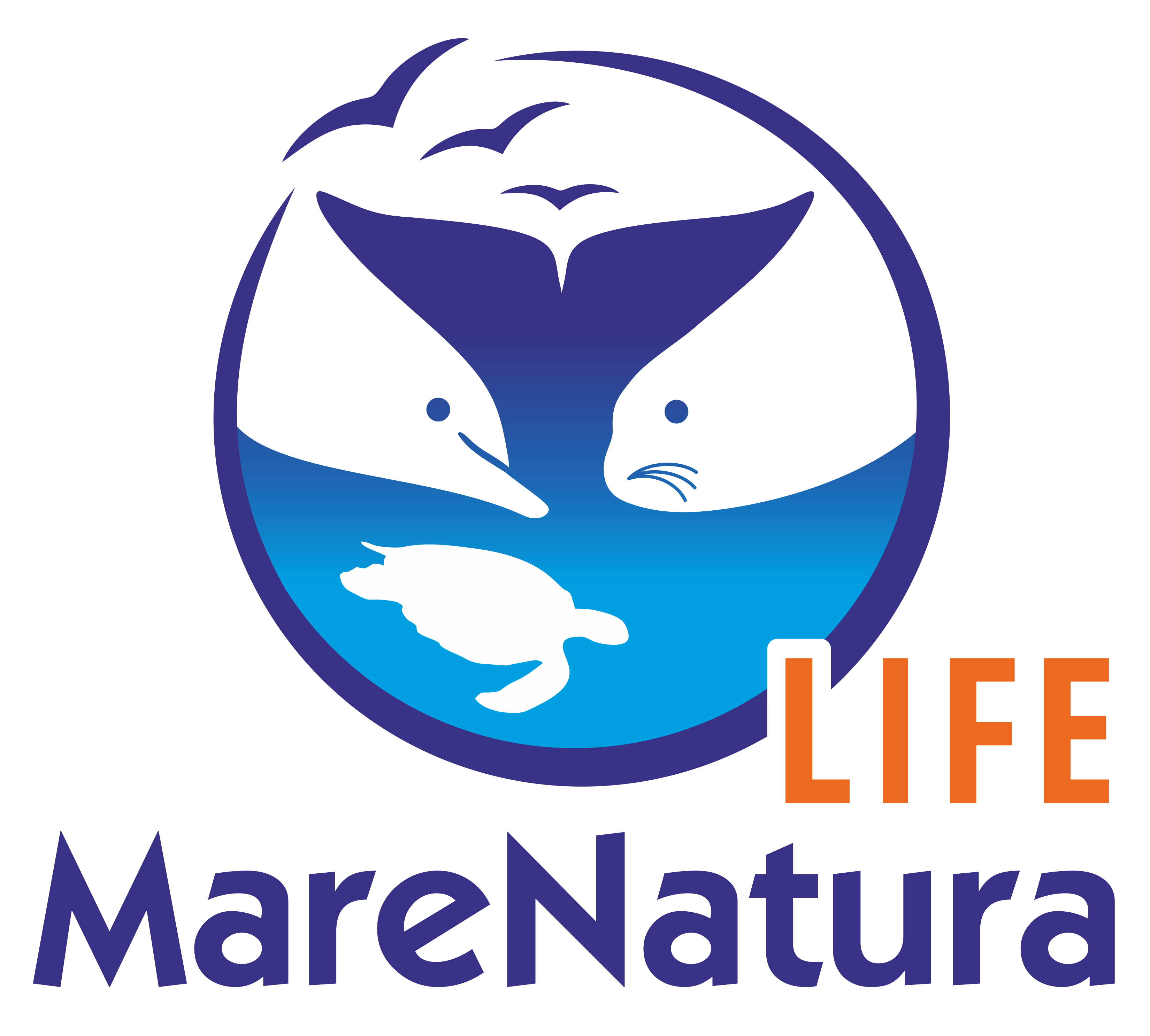



 Ελληνικά
Ελληνικά Italiano
Italiano